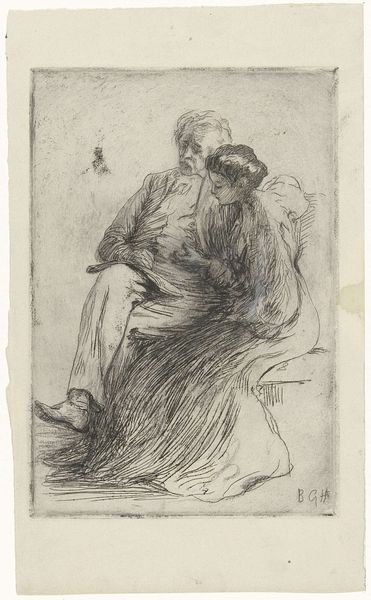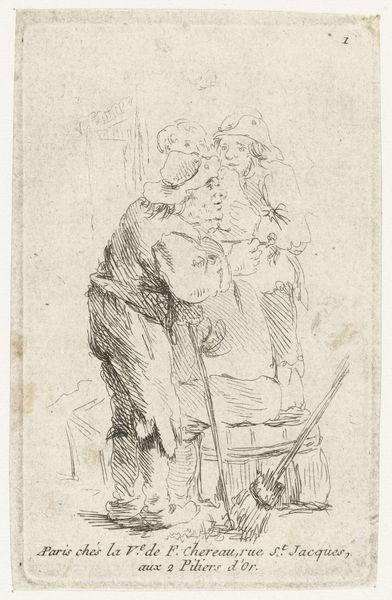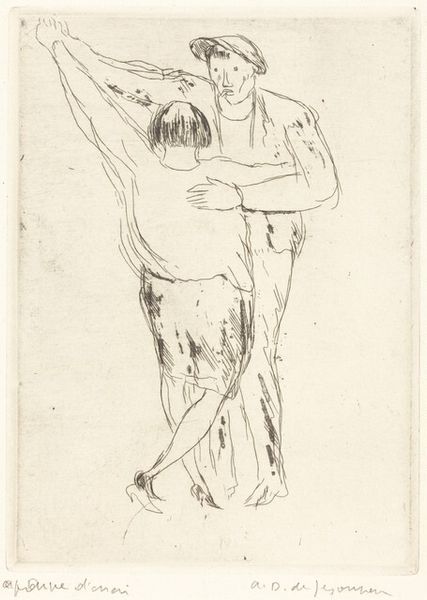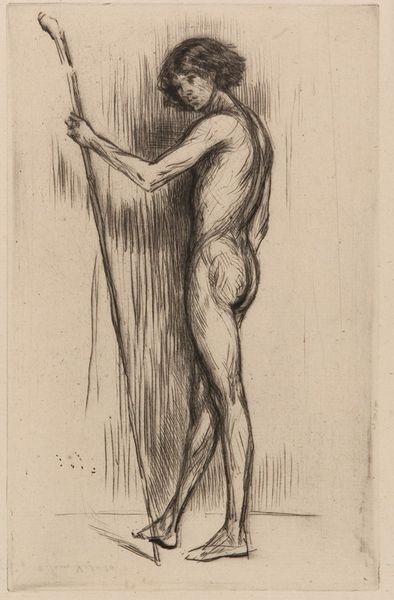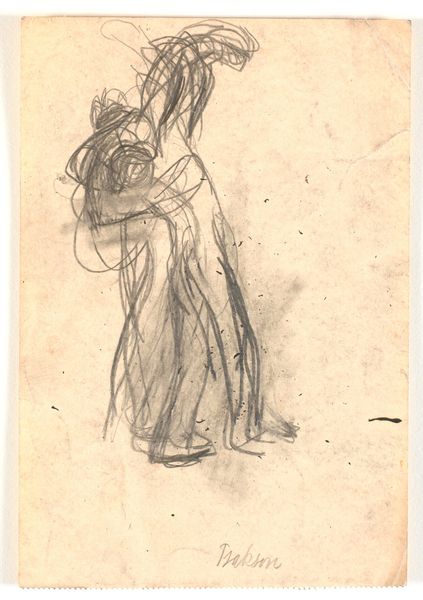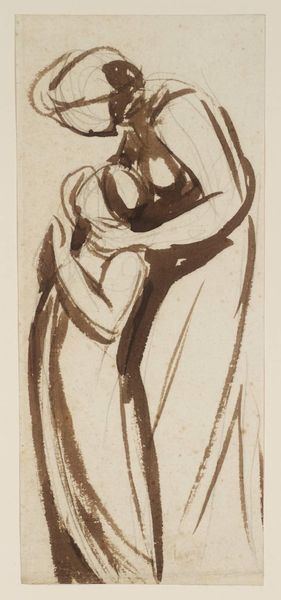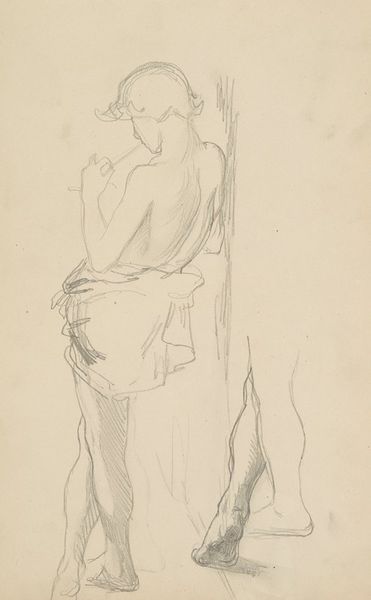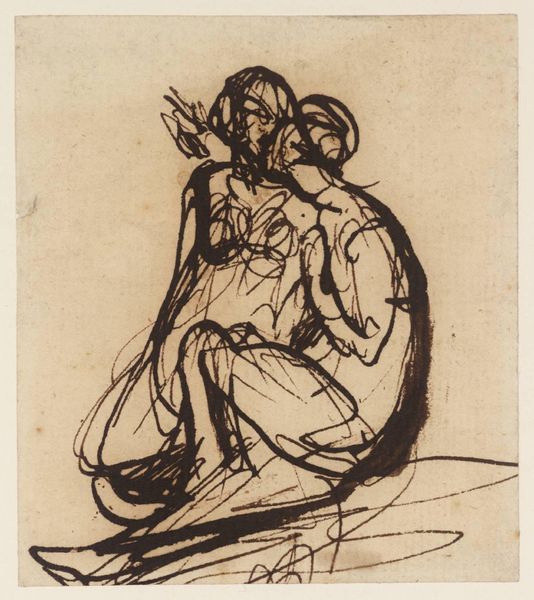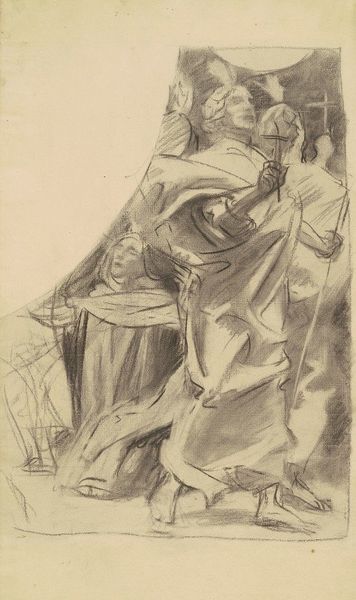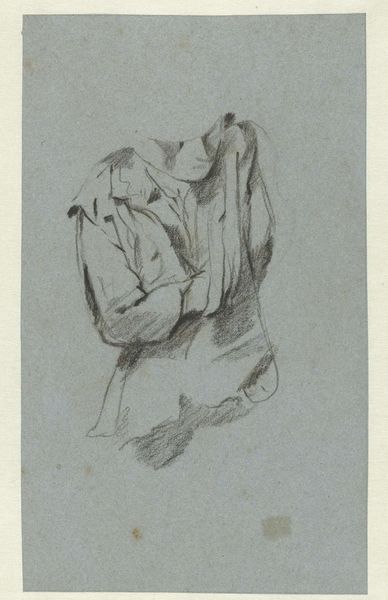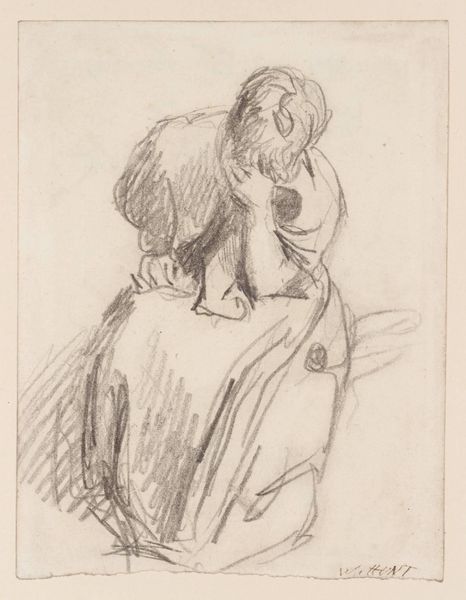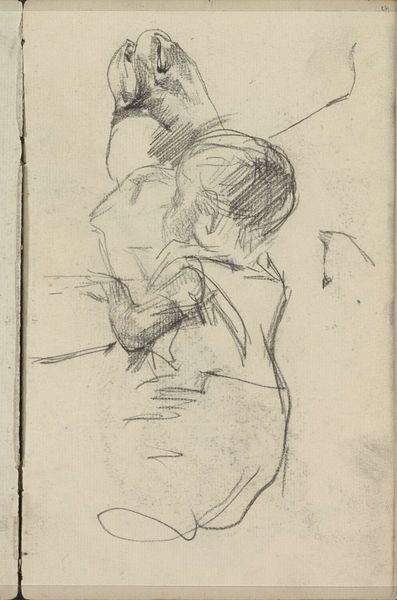
print, etching
#
portrait
#
narrative-art
# print
#
impressionism
#
etching
#
figuration
Copyright: National Gallery of Art: CC0 1.0
Editor: This is David Young Cameron’s "The Beggar" from 1890, an etching. It has a somber and empathetic feel. What do you see in this piece, beyond the surface depiction? Curator: The power of "The Beggar" lies in its ability to address socio-economic disparities and gendered expectations within the late 19th-century urban landscape. Consider the woman's posture. The slight droop of her shoulders speaks volumes about the burdens she carries. Can we consider how the composition emphasizes her vulnerability? Editor: Yes, she almost blends into the background. There is also the child clinging to her back. Curator: Exactly. Who is caring for the carer? This piece pushes us to analyze the systemic failures that leave women like this—especially mothers—in precarious positions. It prompts a conversation around how societal structures contribute to cycles of poverty and disenfranchisement. The Impressionist style also emphasizes that the artist perceived the artwork more than actually “saw” it; Cameron makes it clear this artwork serves as an commentary. What implications might that have had in 1890? Editor: I hadn't considered that her motherhood would play into her societal role and precarity. Thank you! It’s much more than just a depiction of a woman in need. Curator: Absolutely. And consider this— how do you feel such imagery resonates today in terms of our current socio-political challenges and discussions around intersectionality?
Comments
No comments
Be the first to comment and join the conversation on the ultimate creative platform.

